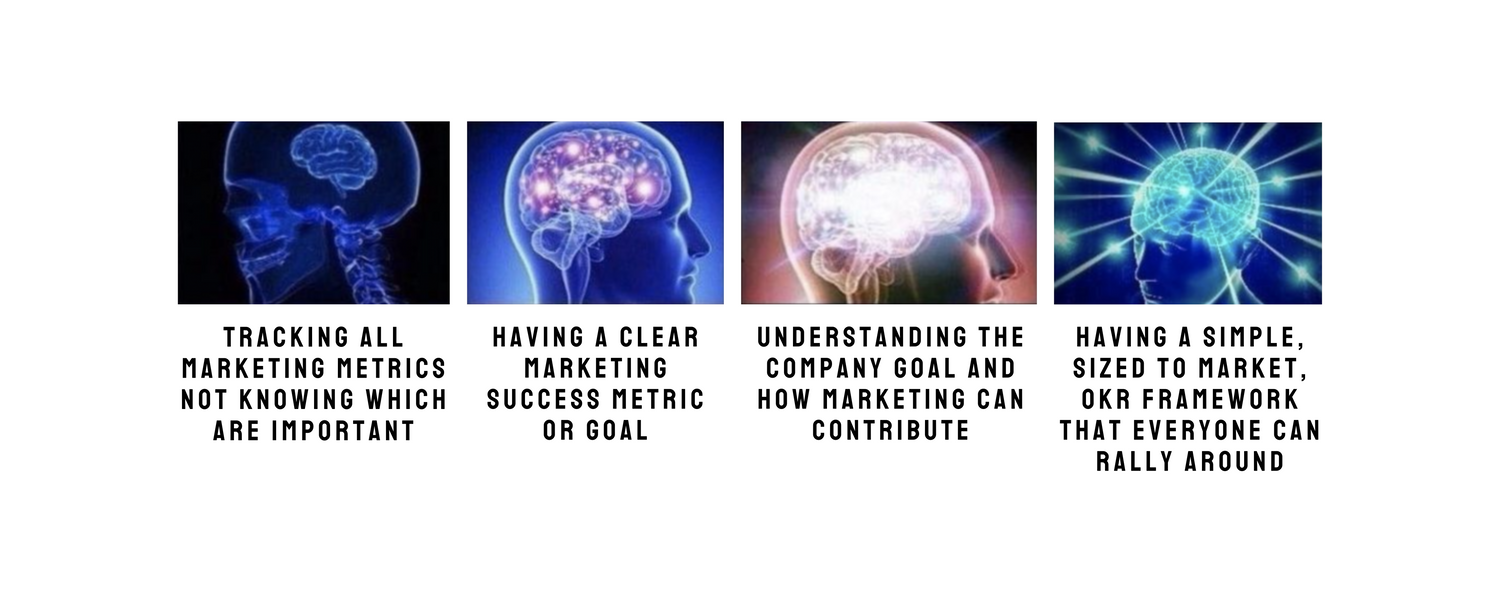3 mistakes to avoid when defining your marketing tactics
 By
Becky Madden
·
3 minute read
By
Becky Madden
·
3 minute read
Many marketers find themselves in a sandwich of marketing tactic suggestions from peers and leaders resulting in an unachievable ‘to do’ list which quite often worms their way into the marketing plan.
These marketers can end up running around in circles trying to implement a million and one ideas and in so doing lose focus on effective marketing tactics.
This is why it’s so important to follow marketing strategy steps first, which leads to our first mistake to avoid: confusing strategy with tactics.
- Confusing strategy with tactics
Implementing a ream of ideas into a marketing plan does not mean you have a marketing strategy. Equally, they probably don’t qualify as tactics either.
They’re often distracting, time-consuming and unlikely to deliver real business results which can be very demoralising for the marketers involved, and in the worst case scenario, can even start to erode the trust the business has with the marketing team.
Make it your mission to avoid busy work, push back, and implement data-led tactics that flow from a solid marketing strategy.
A good marketing strategy starts with diagnosis of your market, your competitors, your target audience and customers to understand the genuine opportunities, scale, needs and expectations, objectively.
With this evidence-based foundation, you can then form your strategy and decide which segment of the market you’re going to go after, who you’ll be targeting and how to position your product or services to them.
Only then will you have the necessary strategic framework to plan your executional approach and move into your marketing tactics.
If you can achieve the above, you’ll have the strategy and data to be able to push back on some of those distracting ideas while also positioning yourself as a proper marketer, providing exceptional value to the business. No good business leader can argue with a solid, evidence-based and data-led strategy, although be ready for an interesting conversation and to receive questions so they can understand your thinking.
Simplified, marketing strategy is the why, where, who and how, while marketing tactics are the actions that you will take or implement to get in front of your target audience or execute on the how.
Without understanding the why, where, who and how, your tactics are at risk of falling short and wasting budget.
In my view, it’s also advantageous to review any available historical data to help refine that long list of ideas into a few good hypotheses you can test to prove or disprove ensuring your marketing plan is geared for effectiveness which is our second mistake to avoid: forgetting to review historical data.
- Forgetting to review historical data
I’ve written several blogs exploring this topic in more detail as I believe it is a crucial factor separating a mediocre marketing plan into an effective one.
Unless you’re in a start-up (even then you may be able to get insights from competitors and the market or industry you’re working within), you should have at least some data that you can review to learn about any previous trends or benchmarks.
Understanding the role of seasonality, competitor activity, budget, channel or media combinations and creative executions can give you some insights into what your target audience is most likely to resonate with and act upon.
Skipping this step can lead to repeating combinations of marketing tactics that have failed in the past (without optimising them), or missing that golden nugget where the right combination of message and place occurred resulting in success.
There’s no silver bullet however, as we live in a dynamic world where a variable changes and our consumers adapt, meaning so do we, but having data-led insights points us in the right direction and helps hold us to account against the business objective. This leads us to the final mistake to avoid:
- Failing to overlay your understanding of your customers and/or target audience on your data insights and hypotheses.
As marketers under pressure to deliver conversions, leads or customers within a budget, we can easily and often lose sight of the real end-goal: to connect with other human beings and provide genuine value.
That’s why the diagnosis stage of a marketing strategy is so important, as if done well it should provide real insights on prospective customers so that a company can provide genuine value, and the marketing and comms plan can emulate that value in a way that will be seen, heard and cut through the clutter.
That being the case, once you’ve examined historical data and formed hypotheses that feed into your effective marketing plan, it’s always worth taking a step back, re-reading your marketing strategy evidence and sense-checking that your marketing plan aligns with the human beings you’ll be trying to reach and communicate with.
In companies with enough budget, pre-campaign testing is always a good idea to ensure a marketer is not the one deciding this alignment exists (marketers are not the customer, and due to their conflict of interest in representing their company and their marketing plan, could never hope to answer on behalf of one), rather a member of the target audience is.
For smaller companies, testing this may involve A/B or multivariate testing, sending around an email survey or running a small focus group.
Avoiding the above mistakes will put you in a much better position to have your marketing plan succeed, and ensure that the business values its marketing.
If you need help implementing a proper marketing strategy, reach out for an obligation free chat.
Subscribe for a monthly blog wrap up
If you or your company needs coaching on marketing strategy to hit business objectives, I'm here to help.
Let's connect to chat about your needs.



